Here are some Neotibicen lyricen molting in New Jersey July 2021.
Rich caramel eyes; blues & pinks in pronotal collar, legs, and mesonotum; green wings (that will stay green) and orange abdomen.

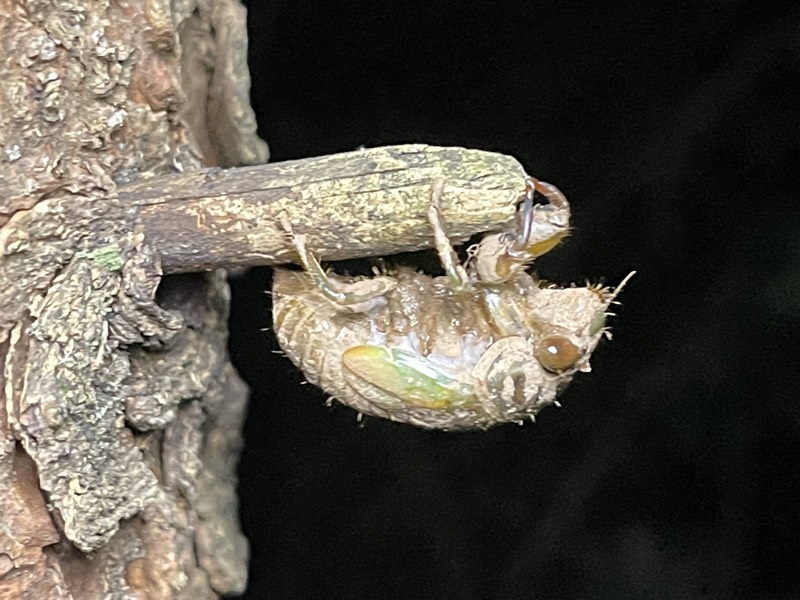
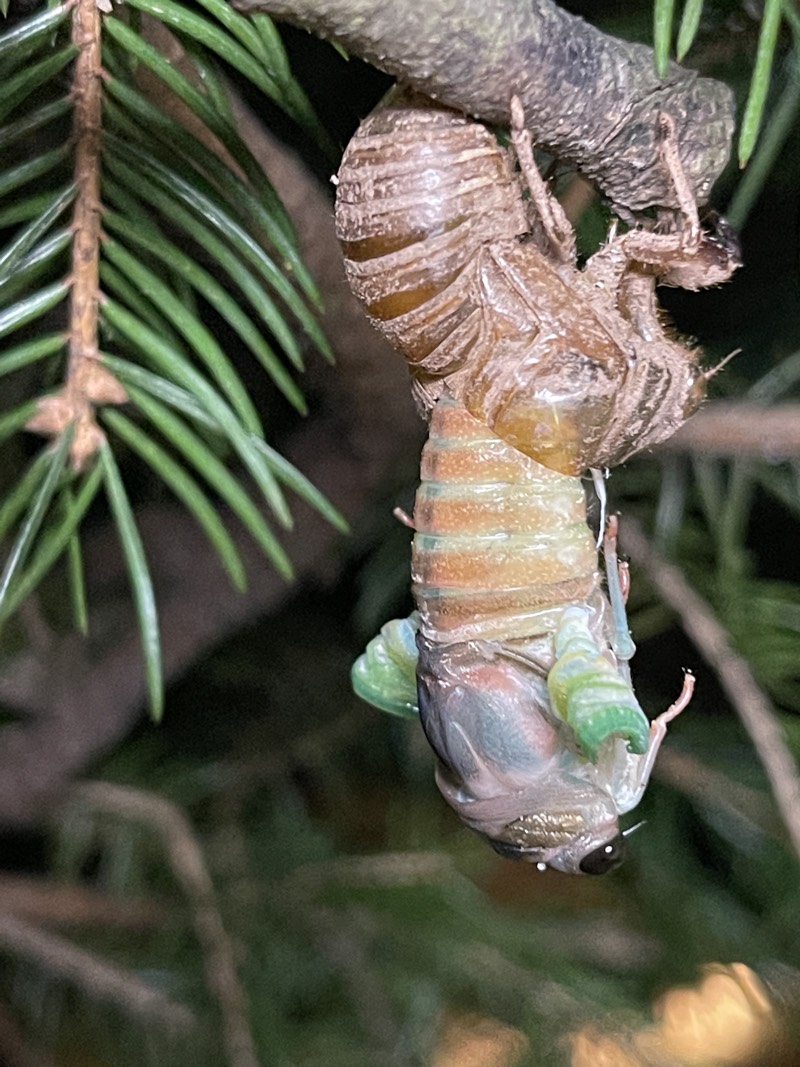
Here are some Neotibicen lyricen molting in New Jersey July 2021.
Rich caramel eyes; blues & pinks in pronotal collar, legs, and mesonotum; green wings (that will stay green) and orange abdomen.



Here’s some photos of Molting Neotibicen tibicen tibicen cicadas taken in New Jersey in July of 2021.
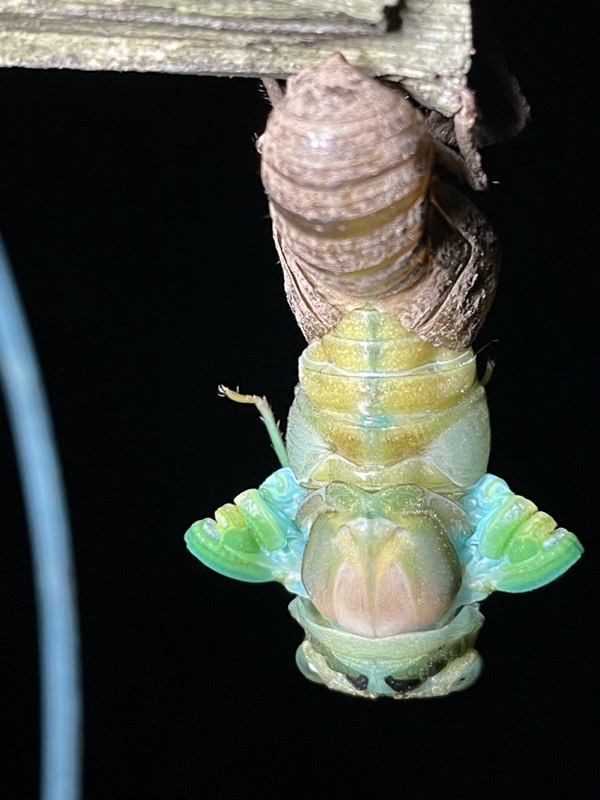
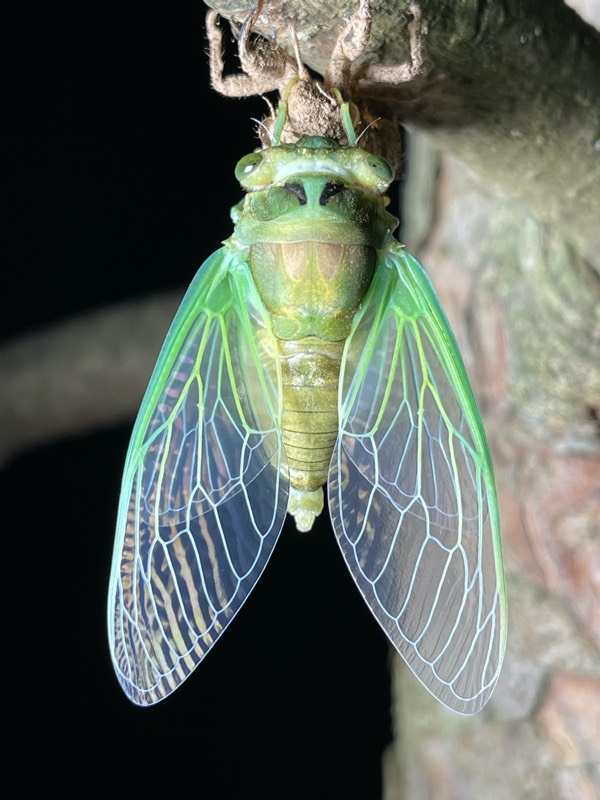
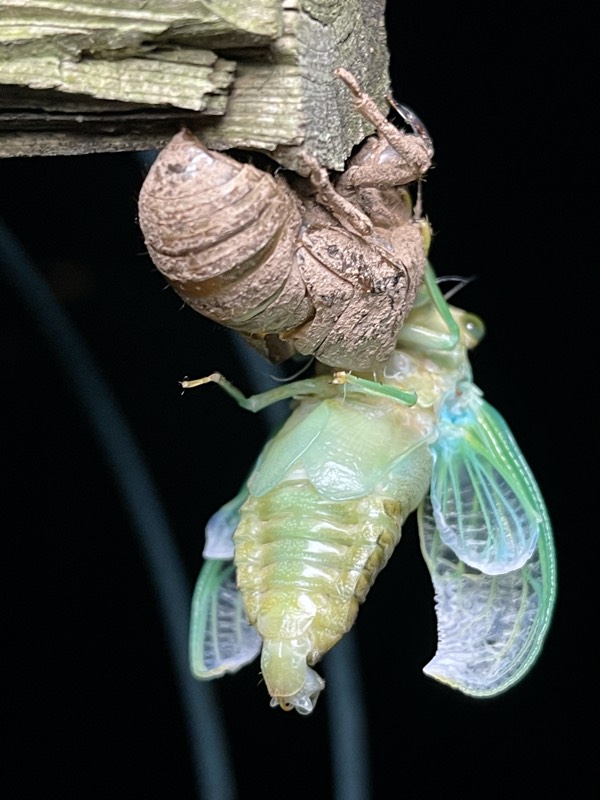
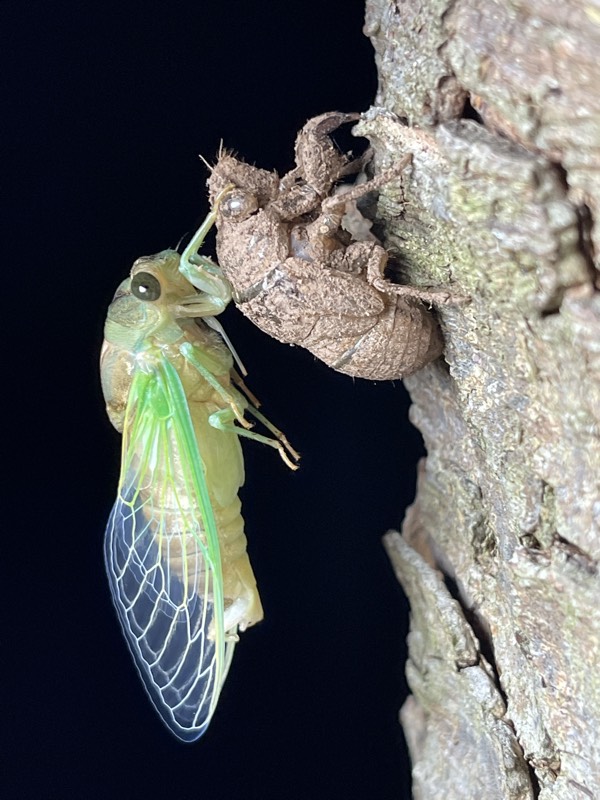
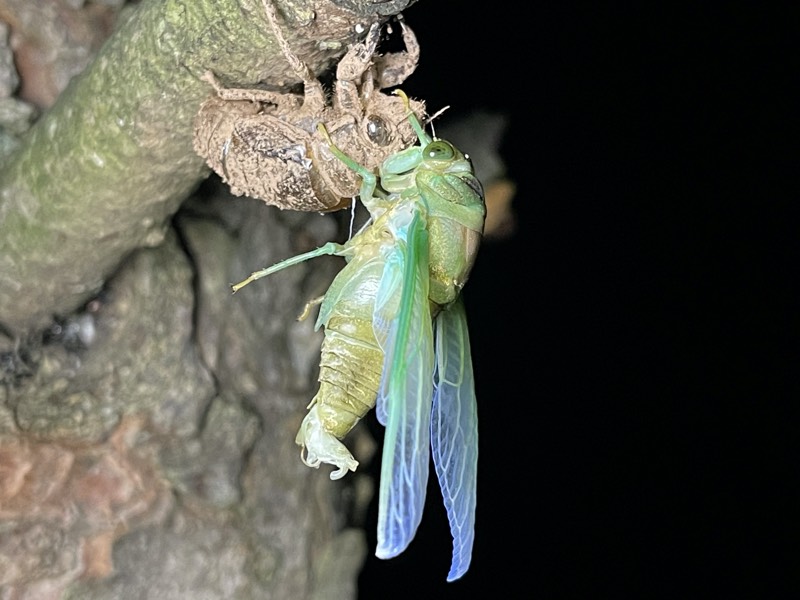

Here are some Magicicada cassinii photos from Brood X, 2021, Flemmington, New Jersey.
Magicicada cassinii ovipositing
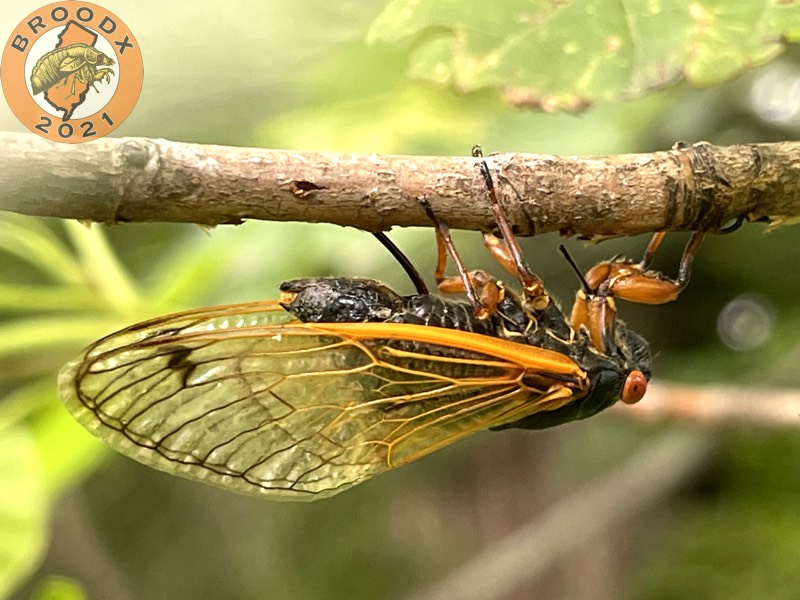
M. cassinii taking a drink:
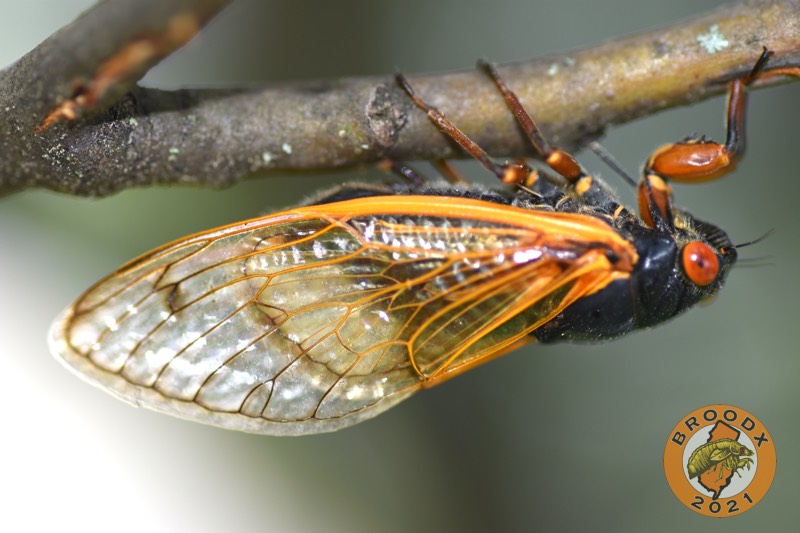
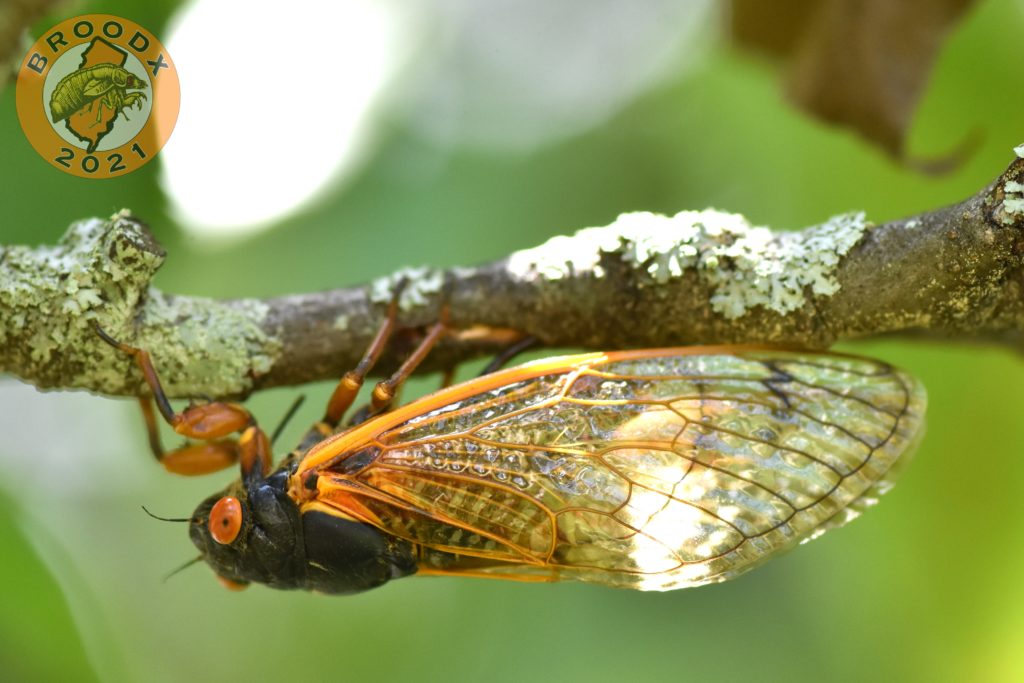
When Magicicada cicadas deposit eggs into a tree branch sometimes the branch dies, the leaves turn brown, and the branch droops like a flag. This is called flagging.
Here are some examples of flagging from the Brood X emergence in Princeton, NJ.
Typically flagging is more impactful to trees imported to North America, but it also impacts native species. The positive aspect is it prunes weaker branches, which helps the tree, and helps other plants in the shade of the tree.
If you want to learn whether eggs/larva survive flagging read FLAGGING: HOSTS DEFENCES VERSUS OVIPOSITION STRATEGIES IN PERIODICAL CICADAS (MAGICICADA SPP., CICADIDAE, HOMOPTERA) by JoAnn White. Hint: very few survive.
A small tree with flagging:
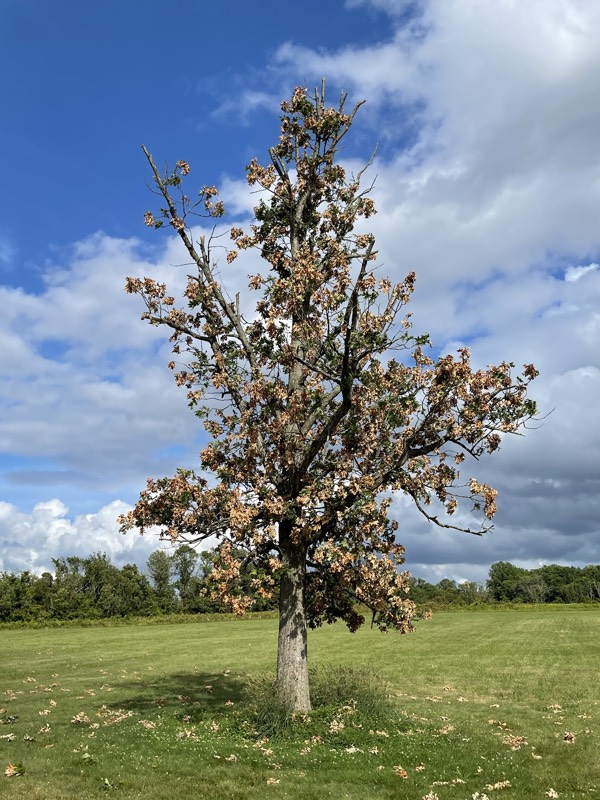
Flagging up close:

Another small tree with flagging:
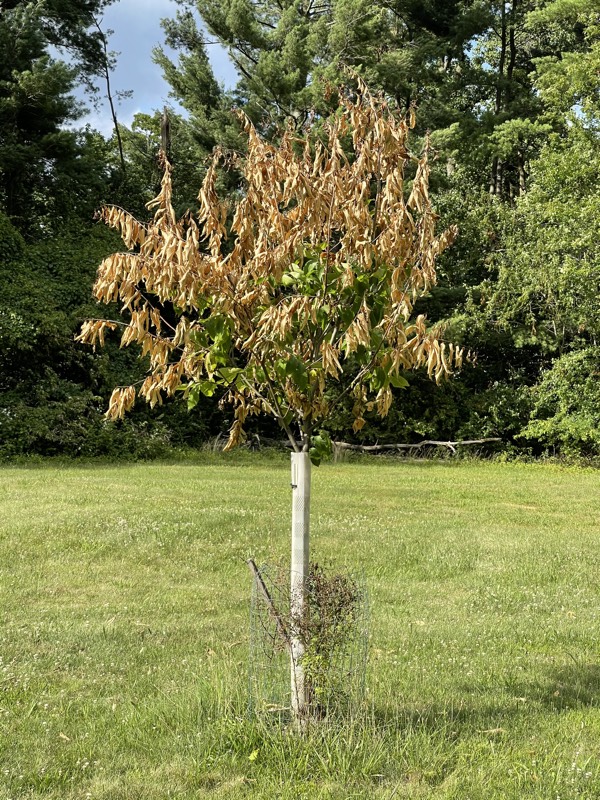
The Princeton Battlefield (historical location of one of George Washington’s battles) has always been a great place to find Brood X periodical cicadas.
Here are a few photos I took last weekend:
A female Magicicada septendecim with white eyes & costal wing margin mating:

A female Magicicada septendecim with white eyes & costal wing margin:
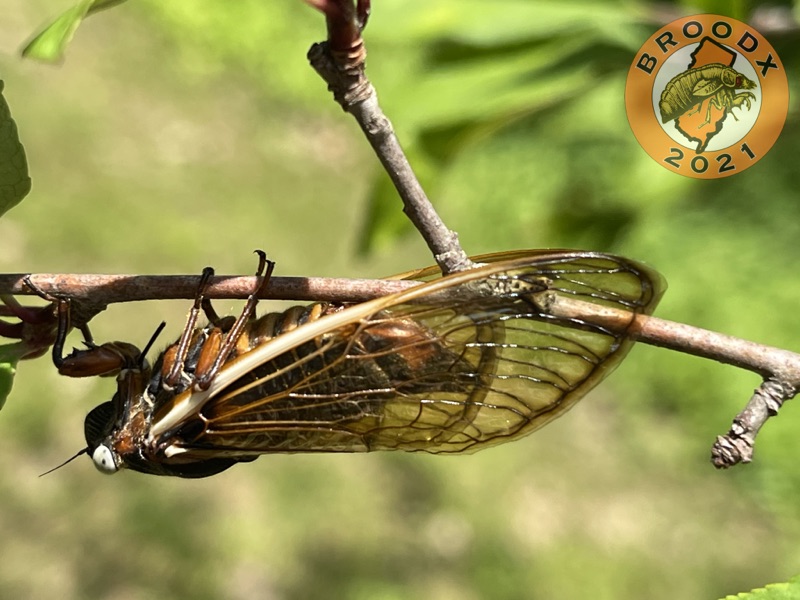
Magicicada with beige eyes:
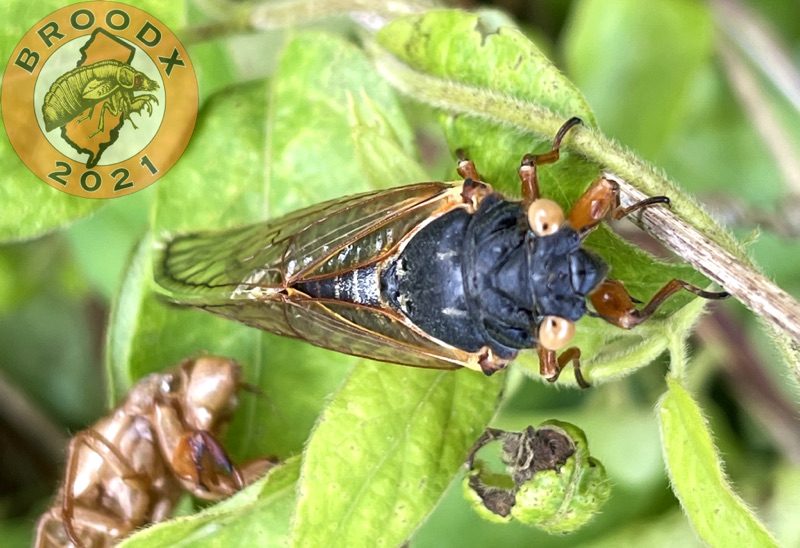
Many, many exit holes:
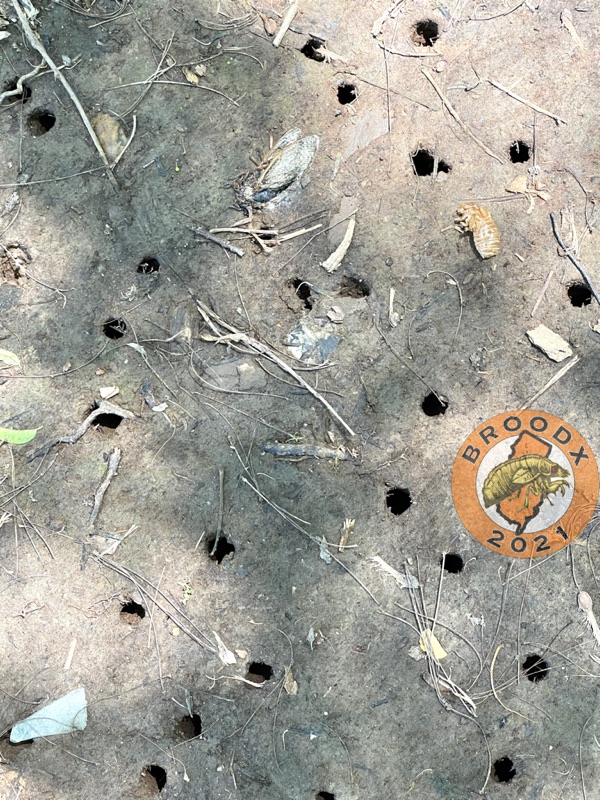
Triple exit holes in mud (kinda looks like a skull):
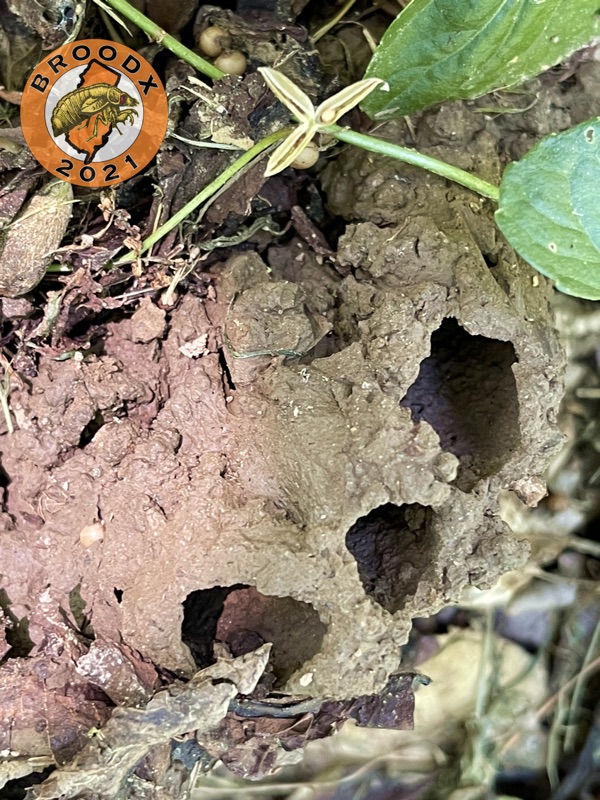
Egg nests carved into branches by the cicadas ovipositor:
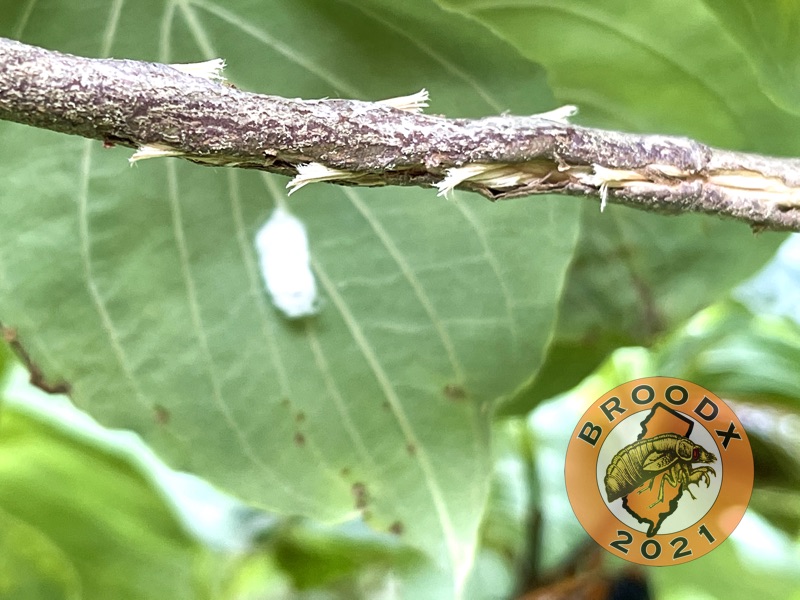
Brood X has emerged in Princeton, New Jersey, but the weather is currently not great for cicadas: less than 50°F and rainy. Undaunted, I visited Princeton yesterday to observe Magicicada cicada behavior on a cold, rainy day.
I arrived at Princeton Battleground State Park around 3:30 PM and immediately head to the short trees and tall weeds, like honeysuckle, that line the perimeter of the park. I was pleased to see hundreds of cicadas clinging to the leaves, stems, and branches of the plants — seemingly without extra effort or discomfort. Many were weighted down by droplets of rain, which seemed to roll off their bodies and bead on their wings like translucent pearls.
Even though temperatures were below 50°F I did hear an occasional distress call, and saw plenty of cicadas mating — perhaps they started mating before the rain and cold weather began. No flying. No calls, chorusing, or wing flicks.
Other than thousands of seemingly healthy but (patient) cicadas hanging from vegetation, there were plenty of malformed cicadas on the trunks of larger trees, and piles of exuvia and corpses circling tree trunks. The air around trees stank like ammonia and rotting fat and meat — not unlike a dumpster behind a burger restaurant.
I saw mostly Magicicada septendecim and some Magicicada cassini. No apparent Magicicada septendecula. I saw just one M. Septendecim infected with Massospora cicadina fungus. While there was plenty of avian activity in the area, I did not see any birds or other creatures feast on the docile or dead cicada — maybe I scared them away — maybe their appetites were satiated.
Cicadas dripping with rain:

Cicadas mating:


M. Septendecim infected with Massospora cicadina fungus:

Different types of Magicicada periodical cicada holes found in Princeton, NJ. Brood X, 2021. Generally speaking, their holes are about the size of a dime. You won’t see a spray or kickback of soil around the hole like you would when an animal is digging into the soil rather than coming out of it (cicadas are coming out).
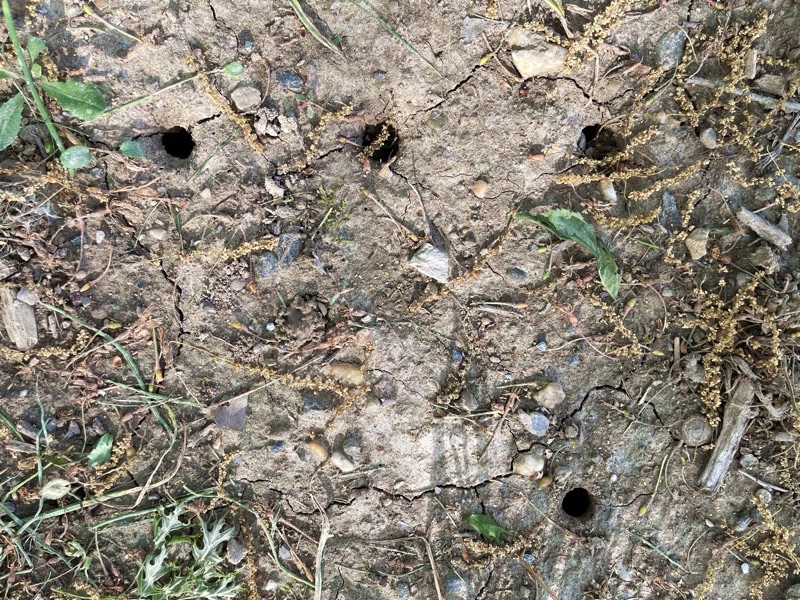
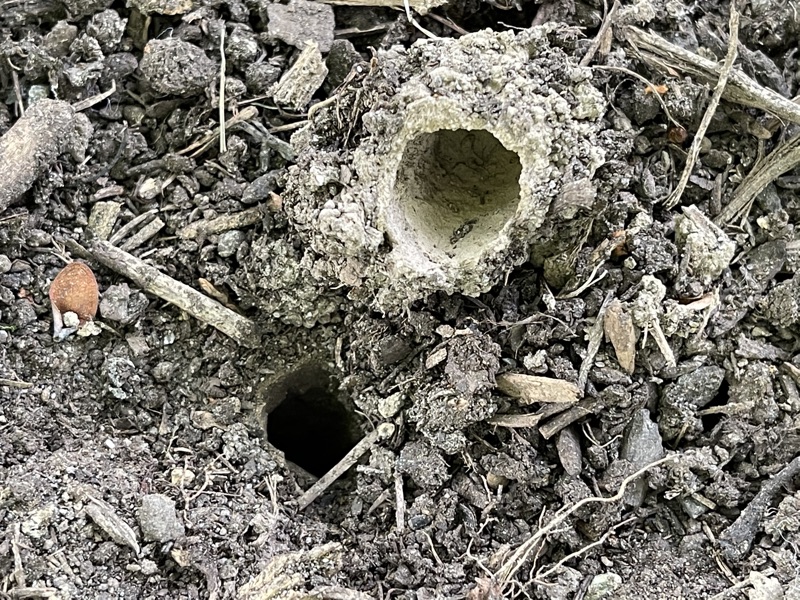

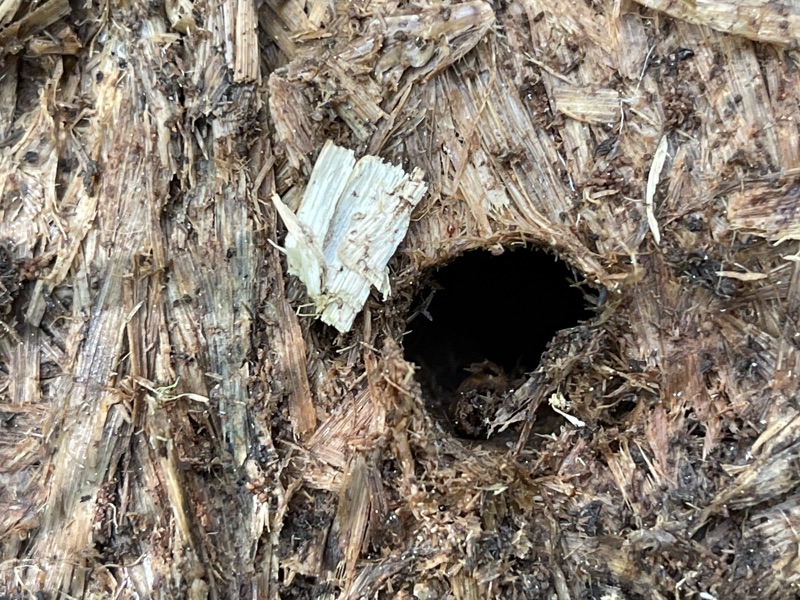
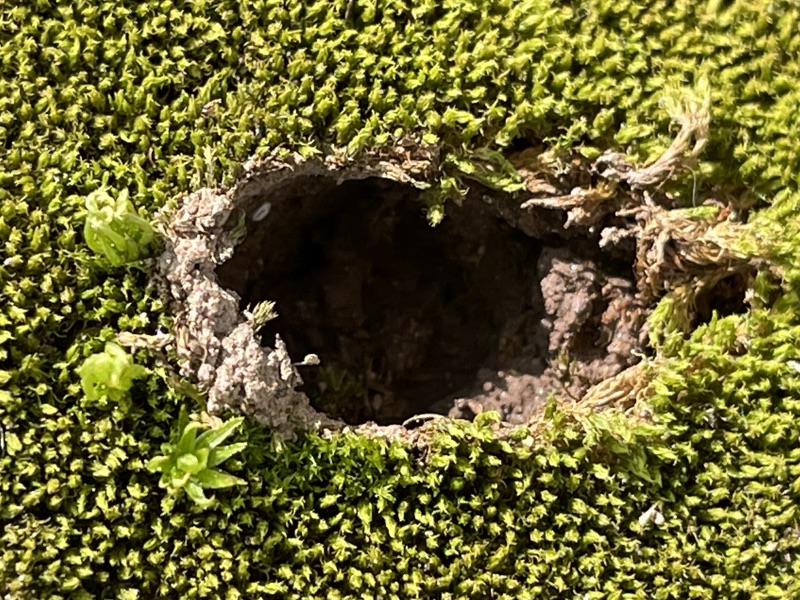
Cicadas will burrow up from the soil of the ground and keep going into the rotting wood of a rotten log! I had to roll the log over to see it.
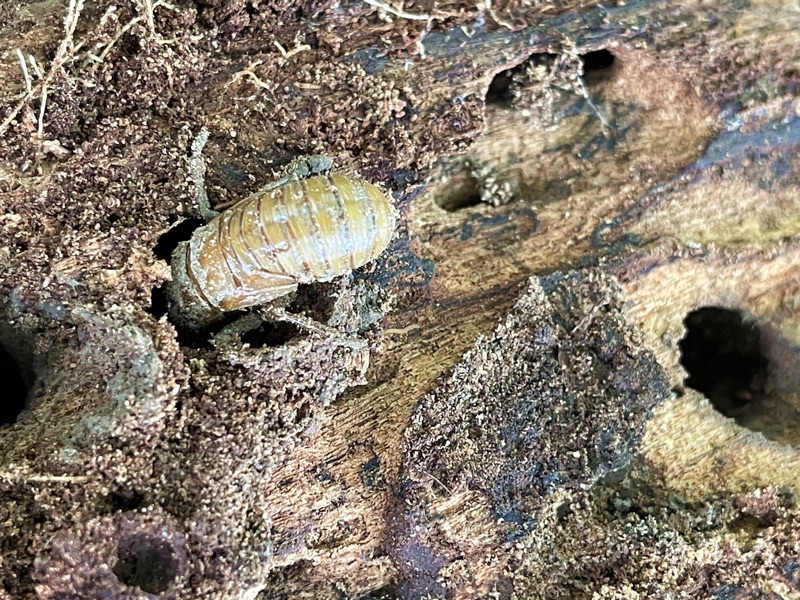

One of the most fun periodical cicada experiences is watching thousands of nymphs emerge from the ground at night, crawl to the nearest vertical surface (hopefully a tree) and begin to molt.
This is a video by Roy Troutman from 2007 of the Brood XIII emergence, specifically in Ryerson Woods in Illinois:
Observing magicicada emergence at Ryerson Woods from Roy Troutman on Vimeo.
Here’s a time-lapse video, also by Roy, of a cicada nymph molting:
Magicicada nymph molting from Roy Troutman on Vimeo.
This is a series of molting and recently molted teneral (soft) cicadas from the 2013 Brood II Magicicada emergence in Metuchen, NJ.
Click/tap the image for a larger version.
A teneral Magicicada septendecim in Metuchen, NJ
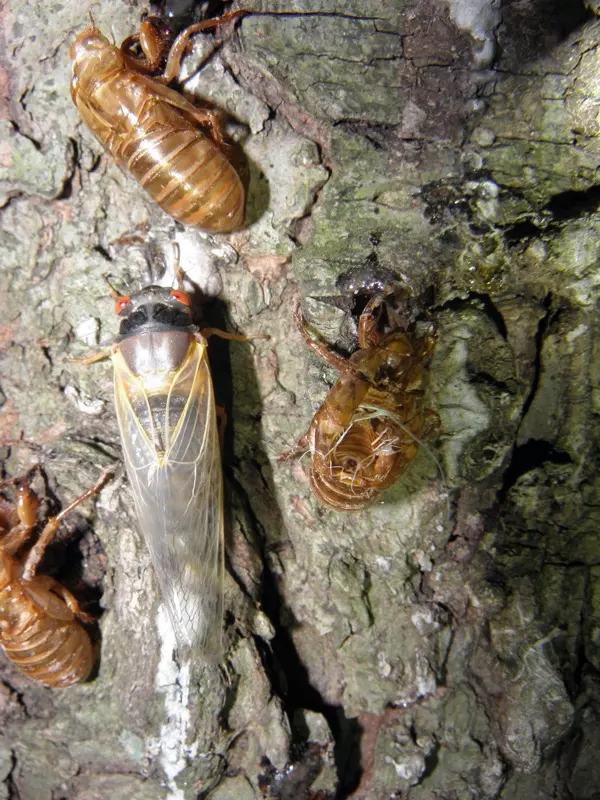
A tisket, a tasket, cicadas on a basket

Molting Magicicada in Metuchen, NJ
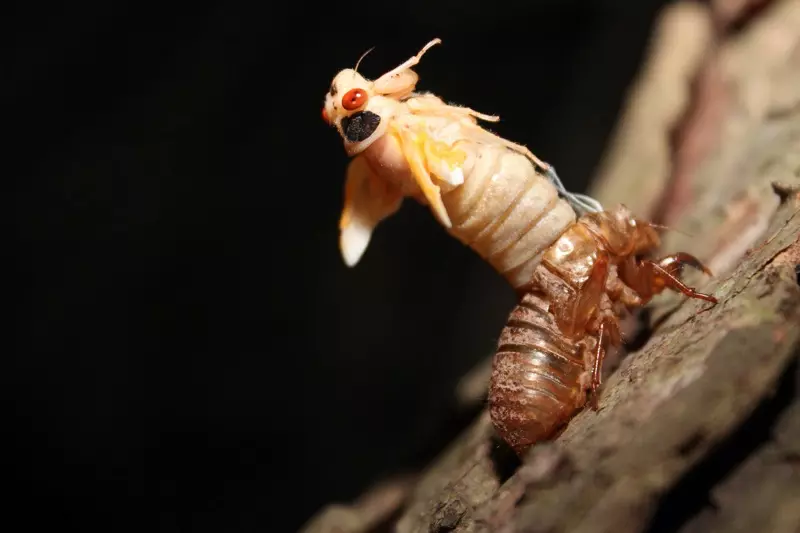
Magicicada emergence in Metuchen, NJ
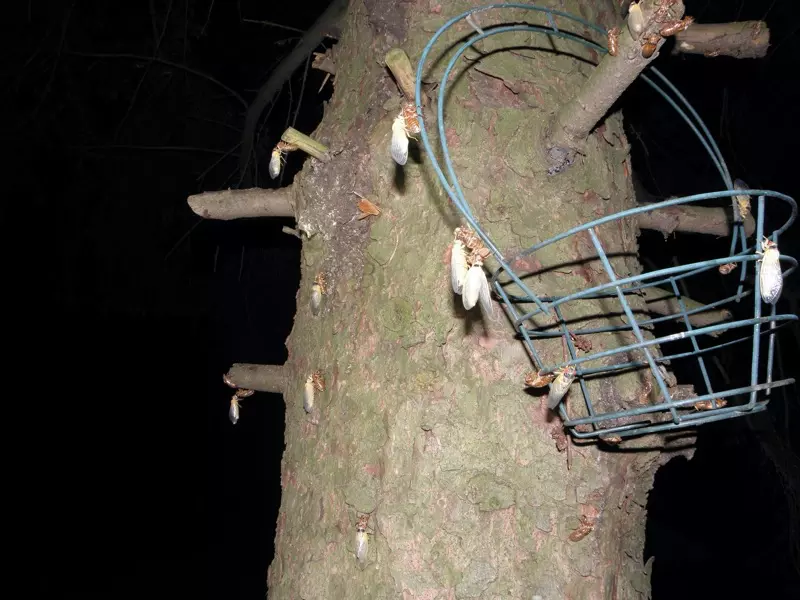
Magicicada exuvia Metuchen, NJ
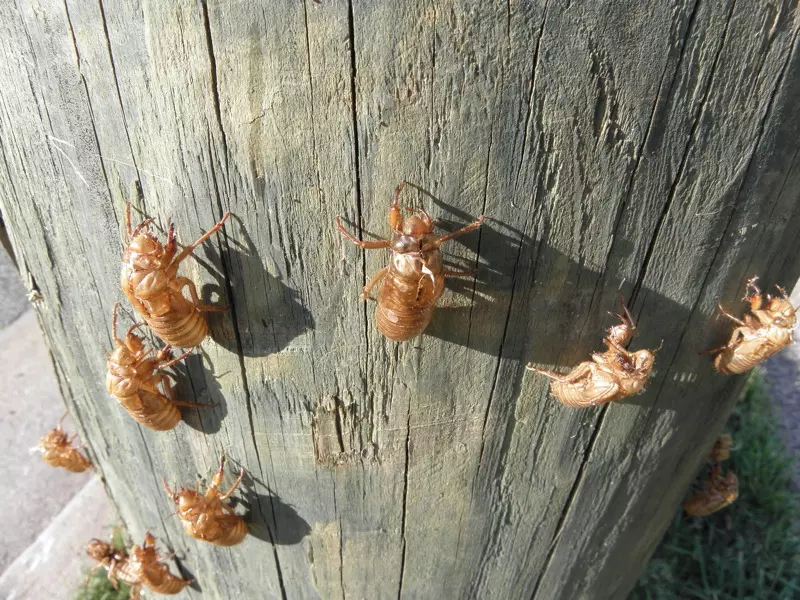
Magicicada nymph and teneral adult on an owl
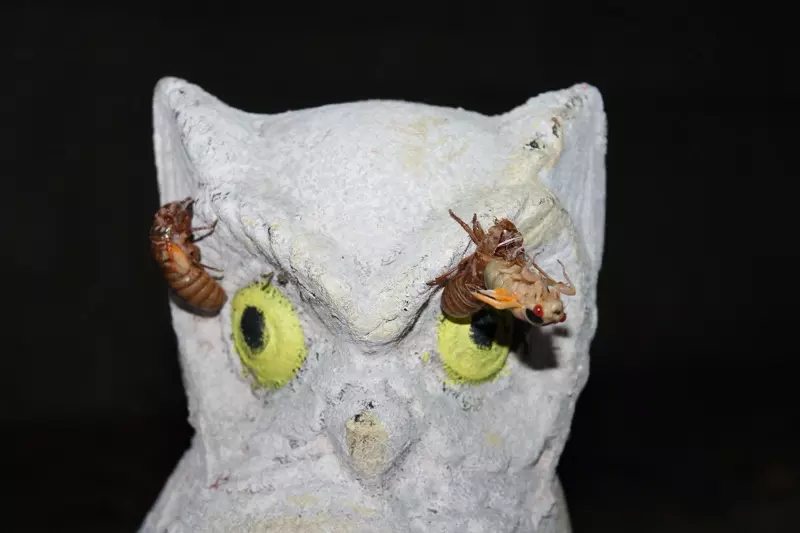
Magicicada molting in Metuchen, NJ
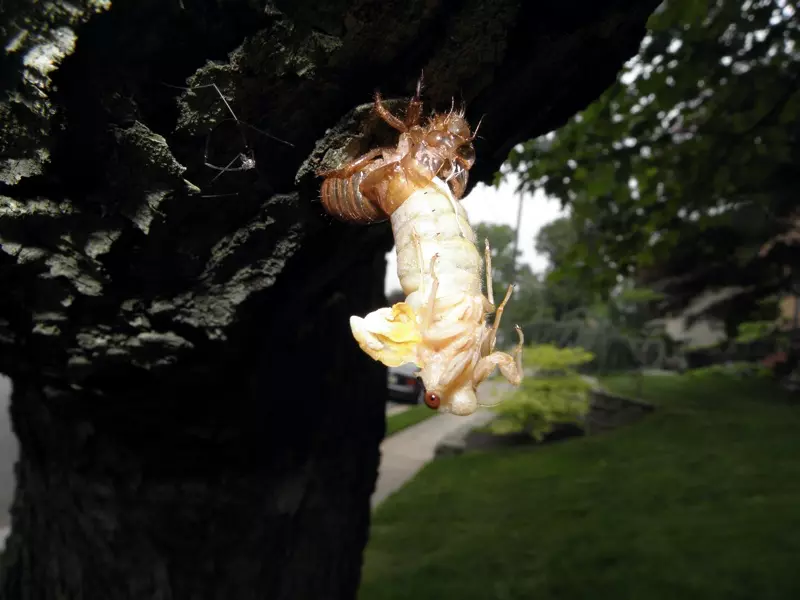
Magicicadas in various stages in Metuchen, NJ
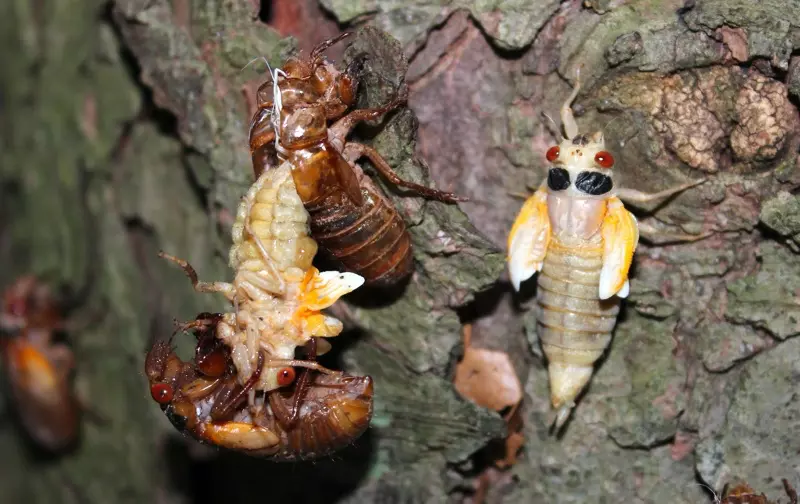
Nymph crawling on Magicicada molting in Metuchen, NJ

Teneral Magicicada cassini in Metuchen, NJ
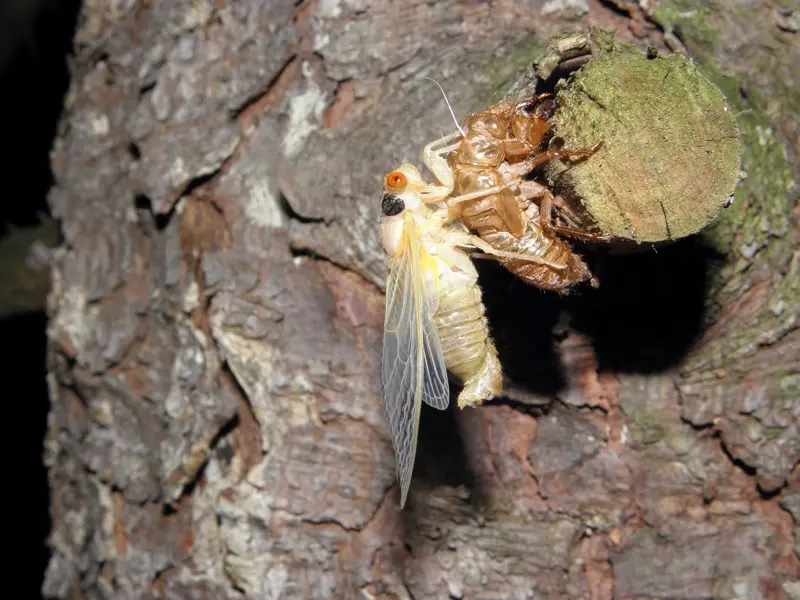
Teneral Magicicada in Metuchen, NJ

Teneral Magicicada in Metuchen, NJ
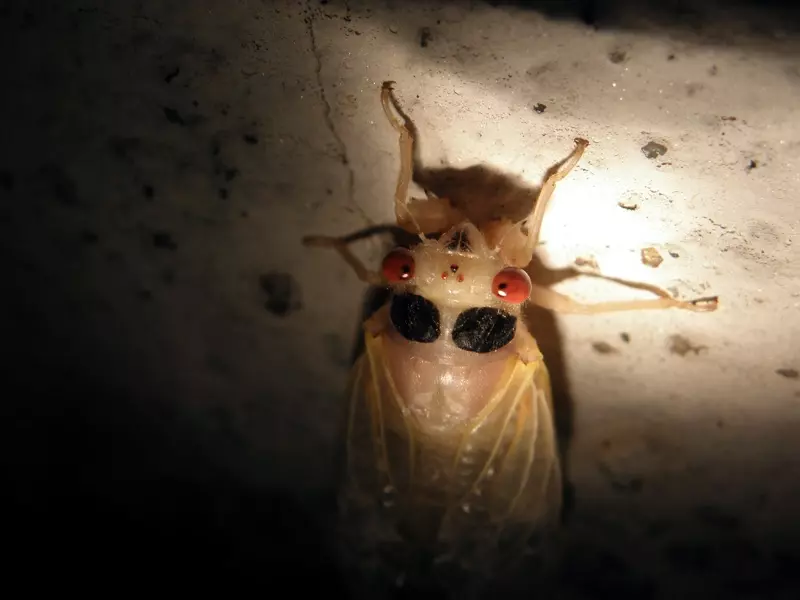
Teneral Magicicada septendecim in Metuchen NJ

Teneral Magicicadas on a spruce tree
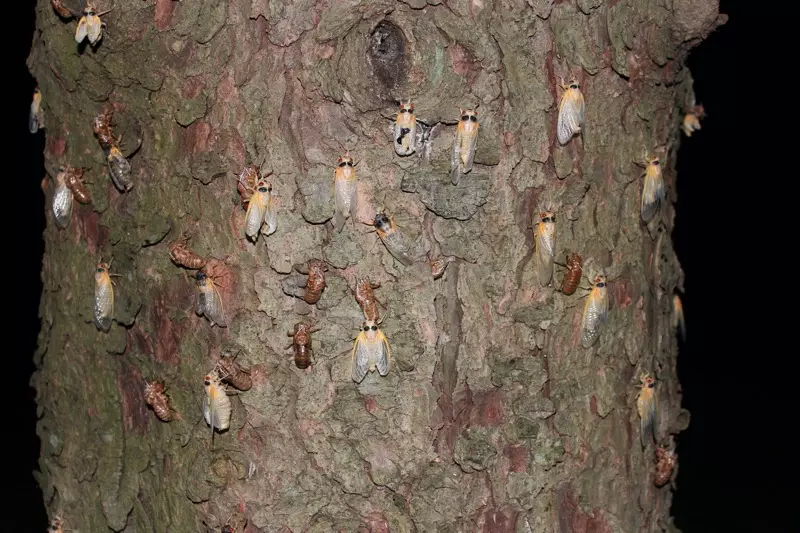
Teneral male Magicicada in Metuchen, NJ
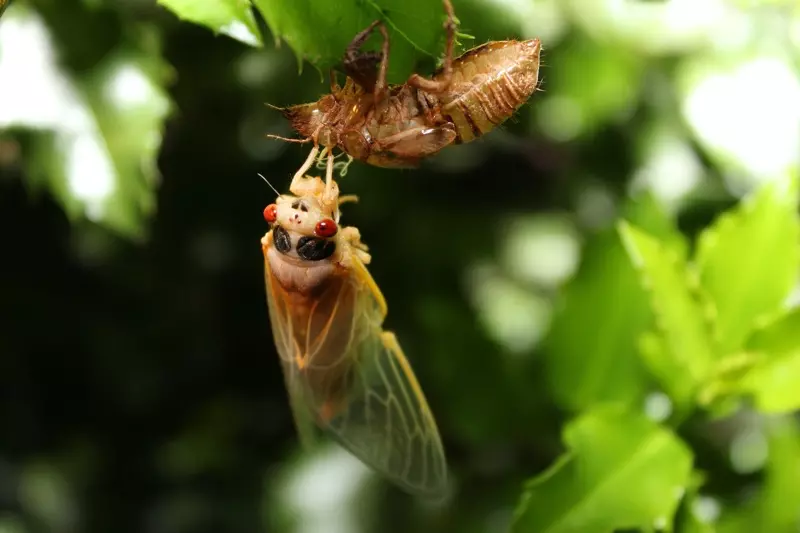
Two male Magicicada cicadas

Two teneral male Magicicadas Metuchen, NJ

White teneral Magicicada in Metuchen yes they are white when they emerge

Other galleries in this series: